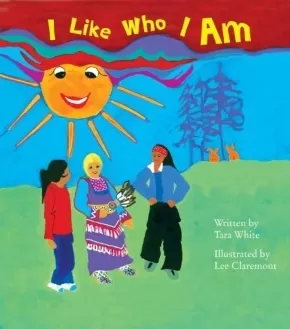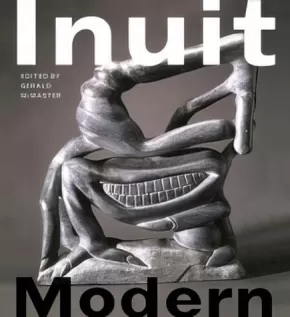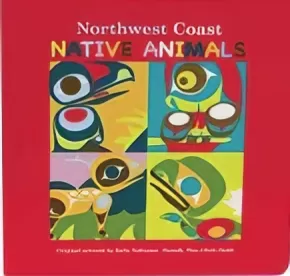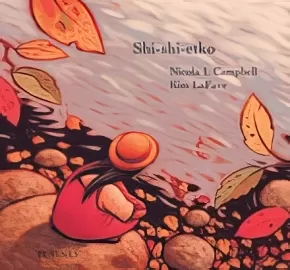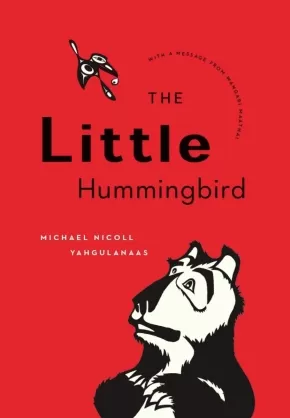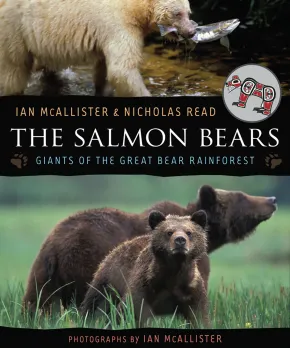
Canadian Indigenous Resource Lists
391
-
405
of
473 Results;
Sort By
Go To
of 32
I Like Who I Am
$12.95
Format:
Paperback
Text Content Territories:
Indigenous Canadian; First Nations; Haudenosaunee (Iroquois); Kanyen'keha:ka (Mohawk);
ISBN / Barcode: 9781894778633
Synopsis:
Synopsis:
Celina is a young Mohawk girl who moves to her mother's home reserve. She is teased by her classmates who tell her that she is not Mohawk and does not belong because she has blond hair and blue eyes. Celina starts to believe her classmates and decides not to dance at an upcoming Pow Wow. But her great-grandmother helps Celina understand that being Mohawk is not about how she looks but about what she feels in her heart. When the drumming starts at the Pow Wow, Celina decides to dance after all. A beautifully illustrated story, I Like Who I Am explores issues of bullying and belonging as Celina looks for acceptance in her new community.
Reviews
"[I Like Who I Am] doesn't only work as a learning tool, with Mohawk words interspersed with English ones, it is a life lesson. Heart warming, sincere and full of experiences we've all had, I Like Who I Am is a must read for parents." — Steve Bonspiel, The Eastern Door
"An outstanding book ideal for helping grades three to six children begin exploring: 1) the concept of culture, 2) the dynamics and pitfalls associated with judging/bullying others based on their physical features, and 3) the value of taking action against bullies who judge others by how they look." — Canadian Material Review
Educator Information
Recommended Ages: 6-11
Additional Information
44 pages | 8.00" x 9.00"
Inuit Modern: Masterworks from the Samuel and Esther Sarick Collection
$24.99
Artists:
Editors:
Format:
Paperback
Text Content Territories:
Indigenous Canadian; Inuit;
Grade Levels: 12; University/College;
ISBN / Barcode: 9781553657781
Synopsis:
Synopsis:
A gorgeous retrospective on the transformation of Inuit art in the 20th century, mirroring the vast and poignant cultural changes in the North.
In response to a rapidly changing Arctic environment, Inuit have had to cope with the transition from a traditional lifestyle to the disturbing realities of globalization and climate change. Inuit art in the latter half of the 20th century reflects the reciprocal stimulus of contact with Euro-Canadians and embodies the evolution of a modern Inuit aesthetic that springs from an ancient cultural context, creating an exciting new hybridized art form. Inuit Modern: Art from the Samuel and Esther Sarick Collection situates modern Inuit art within a larger framework that reinterprets the Canadian Arctic.
Essays by leading Canadian scholars in the field including Ingo Hessel, Robert McGhee, Christine Laloude, Heather Igloliorte, Dorothy Eber and Bernadette Driscoll Engelstad examine the social, political and cultural transformation through the dynamic lens of colonial influence and agency. Inuit Modern also features interviews with David Ruben Piqtoukun and Zacharias Kunuk.
Reviews
"The work of Inuit artists has continually evolved in response to the industrialized, bureaucratic culture encroaching from the south. Inuit Modern, an opulent new coffee-table book, displays the astonishing results. The 175 pieces beautifully reproduced here span the last century." — Georgia Straight
"This book is full of treasures from one of the world's most comprehensive collections of Inuit art. With more than 175 works by Inuit artists, the reader is taken on a journey of the Inuit aesthetic as it evolves from its from traditional roots to a more contemporary and globalized art form." — Globe & Mail Top 100 for 2010
Additional Information
256 pages | 10.00" x 11.10"
Jak's Story
$10.99
Artists:
Format:
Paperback
Text Content Territories:
Indigenous Canadian; First Nations;
ISBN / Barcode: 9781554887101
Synopsis:
Synopsis:
Thirteen-year-old Jak Loren is a typical boy with the usual problems a family with older sisters and younger brothers presents. Never mind the troubles at school - bullies and girls!
When Jak goes to the ravine near his home in Brantford to get away from Steven Burke, a bully who's been tormenting him, he discovers the ravine has a history that's much older than he thought. He meets Grandfather Rock, who shares with him the story of the people who have lived near the ravine for thousands of years. Soon Jak's eyes are opened to a new world of beings and respect.
He learns about First Nations people and how their teachings inhabit the spirits of all living things that surround us even today. The tales of the First Nations help Jak to understand that the gift of life is something to be cherished. And when a construction crew arrives in his neighbourhood and threatens his beloved ravine, Jak knows he has to act to save it.
Reviews
"Jak's Story explores the issues of bullying and the environment and integrates First Nations storytelling, wisdom and history. The chapters are short and captivating and Bell manages to minimize coming off as preachy. I read this book in one sitting." — Waterloo Record
"This is an excellent story to teach youth about First Nations beliefs and culture. It also reminds the reader of the importance of protecting the environment by setting limits to the amount of development of land. Aaron Bells honesty and respect for land and community shines through his writing in this first book." — Resource Links, February 2011
Educator Information
Recommended Ages: 12-15
Additional Information
96 pages | 6.00" x 9.00"
Learn and Play (BB)
$12.00
Artists:
Format:
Board Book
Text Content Territories:
Indigenous Canadian; First Nations;
ISBN / Barcode: 629117021304
Synopsis:
Synopsis:
This 18-page board book introduces concepts such as opposites, shapes, counting, the alphabet, colours, and search and find using Northwest Coast art designs from various Indigenous artists such as Corey Bulpitt, Wolf Morrisseau, and Paul Windsor.
Learn the Alphabet (BB)
$12.00
Artists:
Format:
Board Book
Text Content Territories:
Indigenous Canadian; First Nations;
ISBN / Barcode: 9781554761647
Synopsis:
Synopsis:
Learn the Alphabet with Northwest Coast Native Art is a 23-page board book that introduces young children to the alphabet. The letters include the upper and lower cases for each. Each letter is depicted with the letters and a drawing of a Northwest Coast animal, natural feature or object. For example the Letter H is for hummingbird ; the letter T is represented by Totem. Each artist's contribution is recognized in this important title for young children. This book also introduces young children to Northwest Coast art designs while helping reinforce the letters of the alphabet.
Learn the Colours (BB)
$12.00
Artists:
Format:
Board Book
Text Content Territories:
Indigenous Canadian; First Nations;
ISBN / Barcode: 9781554761654
Synopsis:
Synopsis:
"Learn the Colours" is the result of a collaborative effort on the part of eight Northwest Coast native artists to produce a wonderful book for children who are just learning their colors. The book is made of heavy cardboard using soy-based inks, non-toxic coatings and paper sourced from sustainable forests.
Learn to Count (BB)
$12.00
Artists:
Format:
Board Book
Text Content Territories:
Indigenous Canadian; First Nations;
ISBN / Barcode: 9781554761661
Synopsis:
Synopsis:
"Learn to Count" is made of heavy cardboard using soy-based inks and non-toxic coatings. One Bear, Two Turtles and Three Hummingbirds are the beginning of learning how to count to Nine Frogs and Ten Ravens. Little children will be fascinated by all the shapes and colors this little book presents. And don't forget the Seven Baby Salmon and the Eight Ladybugs. You'll have to buy this book to see what Four and Five are.
My Life with the Salmon (1 in stock, Out of Print)
$18.95
Format:
Paperback
Text Content Territories:
Indigenous Canadian; First Nations; Kwakwaka'wakw (Kwakiutl); Namgis;
ISBN / Barcode: 9781894778886
Synopsis:
Synopsis:
Diane “Honey” Jacobson’s latest book is an important comment about First Nations efforts to save the salmon and her personal youthful journey to find meaning and a sense of place in life. Like the style in her first book My Life in a Kwagu’l Big House, Diane’s style in My Life with the Salmon is full of action, amazing adventures and fascinating connections between land, water and people. In My Life with the Salmon, we follow “Honey” through sometimes hilarious and sometimes difficult periods but we always learn a life lesson.
Awards
- 2012 Winner of the Independent Publisher Book Awards
Additional Information
176 pages | 5.50" x 8.47"
Northwest Coast Native Animals (BB)
$12.00
Format:
Board Book
Text Content Territories:
Indigenous Canadian; First Nations; Nuxalk (Bella Coola); Nuu-chah-nulth (Nootka);
ISBN / Barcode: 9781554761852
Synopsis:
Synopsis:
Each animal has many lessons to teach us. For example, we learn to care for our habitat, to live cooperatively with others, to ahve courage, to think before we act, and to be wise and respectful. Try observing the animals around you. How can you be inspired by their knowledge?
Proud to Be Inuvialuit: Quviahuktunga Inuvialuugama
$19.95
Artists:
Format:
Hardcover
Text Content Territories:
Indigenous Canadian; Inuit; Inuvialuit (Mackenzie Inuit);
ISBN / Barcode: 9781897252598
Synopsis:
Synopsis:
James Pokiak is proud to be Inuvialuit, which means "real people."
The Inuvialuit are the most westerly Canadian Inuit. James lives in the hamlet of Tuktoyuktuk, NWT, which is above the Arctic Circle on the shore of the Arctic Ocean. The community is often just called Tuk to save time. Even though he lives in town now, James grew up on the land, learning the traditional values and survival skills of his people.
In this book, the fifth in the The Land is Our Storybook series, James and his daughter, Rebecca, go on a trip to harvest beluga whale. Harvesting and preparing beluga meat together as a family is an integral part of what it means to be Inuvialuit. Join James and Rebecca and learn about how the beluga whale is interlinked with Inuvialuit culture and history.
Educator & Series Information
Recommended Ages: 8-12
This is the fifth book in the The Land Is Our Storybook Series, a first-ever series of books for children about the diverse lands and cultures of Canada's Northwest Territories.
Additional Information
32 pages | 8.33" x 8.25"
Sharing Our World: Animals of the Native Northwest Coast (HC)
$19.00
Artists:
Format:
Hardcover
Text Content Territories:
Indigenous Canadian; First Nations; Tsimshian (Ts'msysen); Salish; Coast Salish; Haisla (Kitamaat); Heiltsuk (Bella Bella); Haida; Nuxalk (Bella Coola); Nuu-chah-nulth (Nootka); Kwakwaka'wakw (Kwakiutl); Namgis;
ISBN / Barcode: 9781554718764
Synopsis:
Synopsis:
Two legged and four legged beings are beautifully illustrated and cultural meanings provided from the: Nuxalk, Namgis, Caost Salish, Kwakwaka'wakw, Haisla, Heiltsuk, Haida, Bella Bella, Tsimshian, Kwa Na Ki Nulth and Nuchatlaht Nations.
Some of the contributors include: Cranmer, Ryan; Horne Sr., Francis; Windsor, Paul; Bulpitt, Corey; Young, T.J.; Houstie, Ben; Isaac, Eugene; Moraes, Corey W.; Starr, Terry; John, Rose Elsie
Shi-shi-etko
$19.99
Artists:
Format:
Hardcover
Text Content Territories:
Indigenous Canadian;
ISBN / Barcode: 9780888996596
Synopsis:
Synopsis:
In just four days young Shi-shi-etko will have to leave her family and all that she knows to attend residential school.
She spends her last days at home treasuring the beauty of her world -- the dancing sunlight, the tall grass, each shiny rock, the tadpoles in the creek, her grandfather's paddle song. Her mother, father and grandmother, each in turn, share valuable teachings that they want her to remember. And so Shi-shi-etko carefully gathers her memories for safekeeping.
Richly hued illustrations complement this gently moving and poetic account of a child who finds solace all around her, even though she is on the verge of great loss -- a loss that native people have endured for generations because of the residential schools system.
This gentle story of a child on the verge of great loss was selected as the Aboriginal Children’s Book of the Year.
Awards
- Winner of the Anskohk Aboriginal Children's Book of the Year Award.
Educator Information
Recommended Grades: 1-10.
Curriculum Connections: Indigenous Studies, Visual Arts, Science, Health.
Recommended Authentic First Peoples resource K-9.
This illustrated children's story is recommended for English First Peoples Grades 10 for units pertaining to childhood through Indigenous writers' eyes and the exploration of residential schools and reconciliation through children's literature.
This book is available in French: Shi-shi-etko (French)
Additional Information
32 pages | 8.50" x 8.13"
The Little Hummingbird
$21.95
Artists:
Format:
Hardcover
Text Content Territories:
Indigenous Canadian; First Nations; Haida; Indigenous South American;
ISBN / Barcode: 9781553655336
Synopsis:
Synopsis:
This inspiring children's book -- a revised edition of the award-winning Flight of the Hummingbird -- is based on a South American Indigenous story about a courageous hummingbird who defies fear and expectations in her attempt to save the forest from fire. The illustrated story is supplemented by a natural and cultural history of hummingbirds, as well as an inspiring message from Nobel Peace Prize winner Wangari Maathai. The evocative artwork by internationally renowned Haida artist Michael Nicoll Yahgulanaas complements the optimistic tale that encourages everyone to take responsibility for their home and the planet.
Reviews
“This fable-like tale shows readers how one person can make a difference in everyday life… The illustrations are… beautifully representative of Native Haida art.”—School Library Journal
“A visually striking, dramatic book… An environmental parable it is, but could it not be a parable for life itself?”—The Globe and Mail
Educator Information
Recommended for ages 5+.
Based on a South American Indigenous story, The Little Hummingbird features:
- Stunning artwork in Michael Nicoll Yahgulanaas’ iconic style
- An inspiring afterword from Nobel Peace Prize winner Wangari Maathai
- Scientific and cultural facts about hummingbirds
Additional Information
32 pages | 6.75" x 10.00"
The Littlest Sled Dog
$12.95
Format:
Paperback
Text Content Territories:
Indigenous Canadian; Inuit;
ISBN / Barcode: 9781554691746
Synopsis:
Synopsis:
Igvillu is a little dog with big dreams. One of her favorite dreams is of becoming a sled dog. When Igvillu is adopted from her kennel by an Inuit storyteller and moves to northern Canada, she comes face-to-face with real sled dogs. Igvillu loves living in the North, chasing siksiks and dreaming about her future. She''s a dog who believes anything is possible!
The Salmon Bears: Giants of the Great Bear Rainforest
$19.95
Artists:
Format:
Paperback
Text Content Territories:
Indigenous Canadian; First Nations;
ISBN / Barcode: 9781554692057
Synopsis:
Synopsis:
Extensively illustrated with Ian McAllister's magnificent photographs, The Salmon Bears explores the delicate balance that exists between the grizzly, black and spirit bears and their natural environment, the last great wilderness along the central coast of British Columbia.
Key to this relationship are the salmon that are born in the rivers each spring, who then go out to sea as juveniles and return as adults to spawn and die, completing a cycle of life that ensures the survival of not only their own species but also virtually every other plant and animal in the rainforest.
In clear language suitable for young readers, the authors describe the day-to-day activities that define the lives of these bears through the four seasons. But this is also very much the story of the Great Bear Rainforest—a vast tract of land that stretches from the northern tip of Vancouver Island to the Alaska border and contains some of the largest stands of old-growth forest left on the West Coast. The Salmon Bears focuses on the interconnectedness of all life in the rainforest and makes a strong case for the importance of protecting this vital ecological resource.
Additional Information
90 pages | 7.50" x 9.00"
Sort By
Go To
of 32

